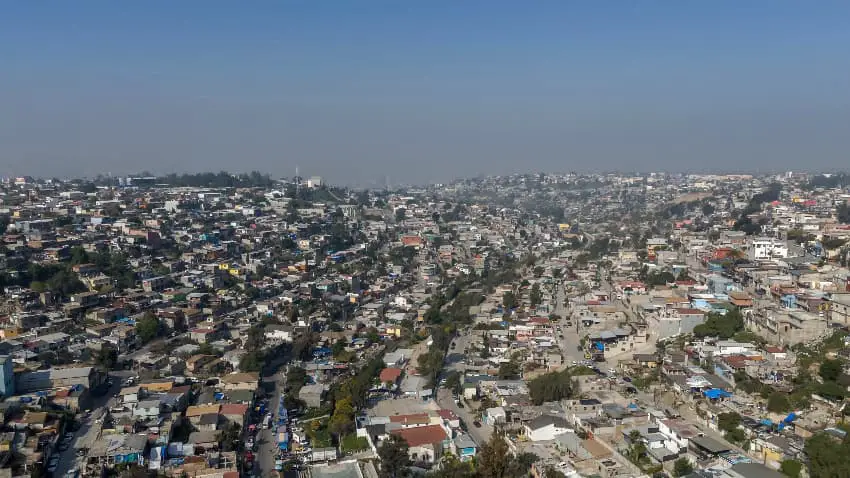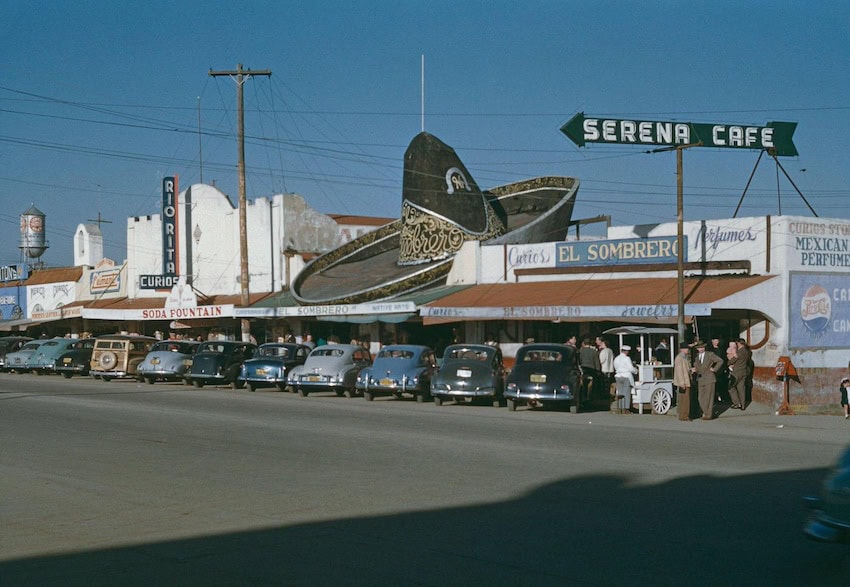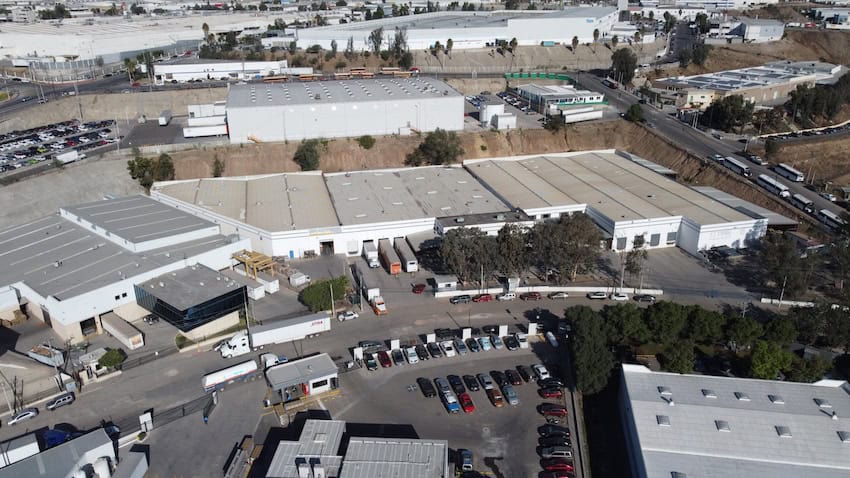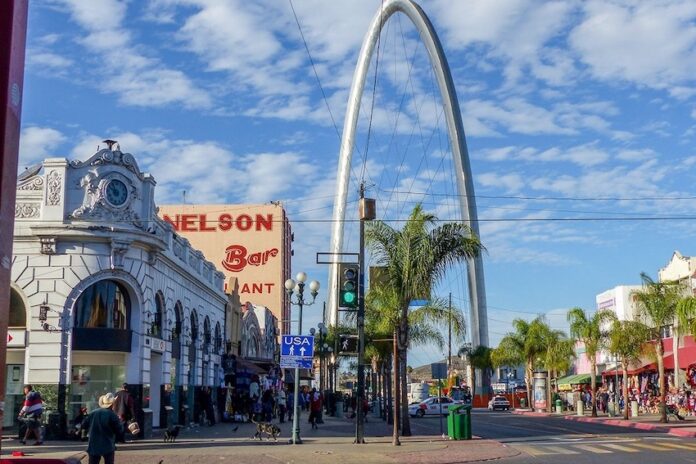Tijuana is a city that never should have happened. Jammed up against San Diego on the United States border in the far northwest of Mexico, the city is riddled with mountains and canyons. Yet, it has become the second largest city on the west coast of North America after Los Angeles, with a population of more than 2 million. Limited from growing northward and westward by the border and the ocean, it has sprawled south to Playas de Rosarito (Rosarito Beach) and east to Tecate, with award-winning wine country not far away either.
Its relationship with San Diego, its northern neighbor, has always been complicated by a border that follows no natural path but was drawn as a straight line after the war between Mexico and the United States. San Diego was neat and orderly with a great seaport and the advantages of being part of the richest U.S. state and the most prosperous nation on the globe. Tijuana was disorderly, dirty and part of a nation struggling with civil war.

What was Tijuana to do? It began to exploit the vices not available north of the border and to adapt its economy to American demand. Ironically, what was considered to be bad in Tijuana would become nice and good when eventually adopted by San Diego and the United States.
In the 1920s, temperance became the law of the land in the United States. Bars were closed, and liquor sales were banned. But the bars and saloons were wide open in Tijuana.
Those were the glamour days, when Tijuana was happy to sell liquor to thirsty Americans, like the Bronfmans of Canada and the bootleggers and speakeasies in the United States. The Hollywood set and others flocked to Tijuana to slake their thirst. Caesar’s Restaurant opened in 1924 on the city’s main street, Avenida Revolución, and invented the Caesar salad to serve to hungry drinkers.
But the day the 18th Amendment was repealed in 1933, Tijuana quickly became a ghost town.
What to do? Tijuana reinvented itself. Casinos were legal in Mexico in the 1930s, but they weren’t in California. The Casino at Agua Caliente was built and owned by the same people who created Las Vegas — Mickey Cohen and Bugsy Segal of Los Angeles. The subsequent prosperity from gambling resulted in the Tijuana International Airport, named after Rodriguez, as well as a monument built in his honor.
The casino and spa achieved a near-mythical status, with Hollywood stars and gangsters flying in to play — often with ladies who were not their wives (or husbands). Musical nightclub productions were broadcast over the radio. Margarita Cancino was discovered here, becoming the legendary Rita Hayworth.

But in 1935, newly elected President Lazaro Cárdenas decreed an end to gambling and casinos in Baja California, and the Agua Caliente complex faltered, then closed. Tijuana again became a ghost town.
Then Japan attacked the United States fleet at Pearl Harbor, and millions of young Navy sailors from all over the United States arrived in San Diego. For the young men, San Diego was considered “pretty” but really, really boring.
It was then that Tijuana — particularly its bars along Avenida Revolucion — became the destination of choice for fun for many of these military men. And Tijuana’s notorious “Zona Norte” red-light zone provided liquor and ladies for America’s finest. Bullfights lent “sophistication” and excitement for the young American who found that they, too, “weren’t in Kansas anymore.”
Then the war ended, and, once again, Tijuana languished. American tourists still flocked to Tijuana, however, searching for what they could not get in the conservative Eisenhower era in their own country.
Readily available were instant marriages and quick divorces. Ready abortions flourished for American women with unfortunate or unwanted pregnancies in Tijuana, despite abortion’s illegality throughout Mexico. Also popular were the topless shows at the notorious Blue Fox bar, where ladies did things with their anatomy that amazed and titillated, often with audience participation.
Then came the 1960s and the sexual revolution in the United States. Tijuana again fell on hard times.

In the 1960s, Tijuana discovered a new way of doing business with the Americans — free trade zones, where merchandise from around the world could be purchased for much less than north of the border. Without taxes, many beautiful stores opened in Tijuana, including Sara, Dorians, Maxim Imports and endless beauty supply stores and fashion outlets.
Tijuana stores carried perfumes and excellent merchandise from Asia and Europe that attracted customers from both the United States and Mexico long before these items were available at the local San Diego department stores.
Then after Mexico’s passage of the National Border Industrialization Program of 1964 and as Tijuana tamed the Tijuana River, — prone to flooding low-lying parts of the city — Tijuana found another sustainable way to bring prosperity to its people. The “maquiladora” program saw raw materials shipped to Tijuana for assembly and then returned to the United States as finished goods.
Since then, the maquiladora program has created a prosperous city that now exports almost US $200 million of sophisticated goods every day. Tijuana has become the global leader in television production, pacemakers, heart valves, orthopedic products, aerospace parts, and trucks. It is now the world’s largest center for the manufacture of medical devices.
International companies with globally recognized names began to manufacture in Tijuana. Companies such as Kyocera, Toyota, Hyundai, Samsung, Panasonic, SONY, DJO Global, Cubic Corporation, Solar Turbines/Caterpilar, Bose speakers, Sharp, and Welch Allyn opened maquiladoras.
The next time you have your blood pressure taken, look at the equipment. Odds are it will say Made in Mexico by Welch Allyn — in Tijuana. There is Plantronics (now Poly), where the headsets used by the astronauts are made. More flat-screen televisions are made in Tijuana than anywhere else in the world.

During the last decades, Tijuana aerospace employment has almost doubled its size, reaching a talent pool of over 11,690 highly skilled employees. Mexico now graduates more engineers than the United States, a country more than twice its size. Many are from Tijuana universities such as UABC, CETYS and TecNM. Local universities and technical schools have developed advanced and specialized engineering programs to sustain the growth of the sector.
More than 37 Tier 1 companies and industry suppliers now operate in the city. This cluster represents the largest concentration of firms and employment of the aerospace and defense industry in Mexico.
The city offers a manufacturing ecosystem with a unique combination of competitive factors such as 30 years of manufacturing experience, world-class quality, competitive labor costs, and a local supply chain. Tijuana today has more than 50 state-of-the-art industrial parks.
Thriving drugstores sell medicines from the same international companies as in the United States, but at much lower prices. Many pharmaceuticals that require a prescription in the U.S. can be purchased over the counter in Tijuana, making this one of the reasons U.S. tourists come to the city.
Then there is real estate. Along the beautiful coastline of Tijuana and neighboring Rosarito Beach, foreigners can buy apartments and houses at one-third the price just north in San Diego County. In Tijuana’s center, more than a dozen high-rise condominium developments have become popular with American buyers, some of whom join the 70,000 daily commuters who cross north over the border to work.
They choose to live in Tijuana for three main reasons: lower cost of living, a different, dynamic culture and family connections.
The United States Navy recognizes Tijuana as the preferred residence for many of its civilian workers who use the U.S.’s Global Entry/SENTRI system to easily cross the border to their jobs on a daily basis, avoiding San Diego’s high housing costs.
These commuters are part of the more than 120,000 Americans living on the Baja California peninsula. Their needs are served by one of the largest US Consulates in the world, based, of course, in Tijuana.
Tijuana, which once thrived by offering Americans the opportunity to be bad, now prospers as one of Mexico’s industrial powerhouses.
James Clark writes for Mexico News Daily
